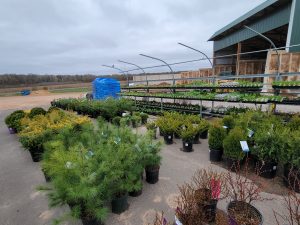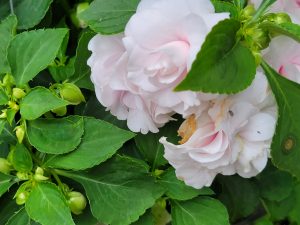10 Gardening Tips from Jeff: ….

Here are 10 perennial gardening tips to help you create a beautiful and low-maintenance garden:
- Choose the Right Plants: Select perennial plants that are well-suited to your climate, soil type, and sunlight conditions. Native species are often a good choice as they are adapted to the local environment.
- Plan for Continuous Bloom: Aim for a mix of perennials that bloom at different times throughout the growing season to ensure your garden remains colorful and vibrant from spring to fall.
- Provide Adequate Sunlight: Most perennial plants require at least 6 hours of sunlight per day to thrive. Make sure to position your garden beds in locations that receive sufficient sunlight.
- Prepare the Soil: Prior to planting, amend the soil with compost or organic matter to improve drainage, fertility, and overall soil health. Perennials generally prefer well-draining soil with a slightly acidic to neutral pH.
- Mulch Regularly: Apply a layer of mulch around your perennial plants to suppress weeds, retain moisture, and regulate soil temperature. Organic mulches like shredded leaves or bark chips also break down over time, enriching the soil.
- Water Wisely: Water newly planted perennials regularly to help establish strong root systems. Once established, many perennials are drought-tolerant, but they may still need supplemental watering during dry spells, especially in their first year.
- Prune as Needed: Deadhead spent flowers to encourage continued blooming and remove any dead or diseased foliage to maintain plant health. Some perennials may benefit from periodic pruning to control their size and shape.
- Divide and Conquer: Divide overcrowded perennials every few years to rejuvenate them and prevent them from becoming too crowded. This also allows you to propagate new plants to expand your garden or share with friends.
- Fertilize Appropriately: While many perennials don’t require heavy fertilization, a light application of balanced fertilizer in spring can provide a nutrient boost for healthy growth. Avoid over-fertilizing, as this can lead to excessive foliage growth at the expense of flowers.
- Plan for Year-Round Interest: Incorporate a mix of evergreen perennials, ornamental grasses, and plants with interesting foliage to ensure your garden remains visually appealing even when not in bloom. Additionally, consider adding hardscape elements such as rocks or decorative structures for added texture and interest.
By following these perennial gardening tips, you can create a beautiful and sustainable garden that will delight you year after year.








